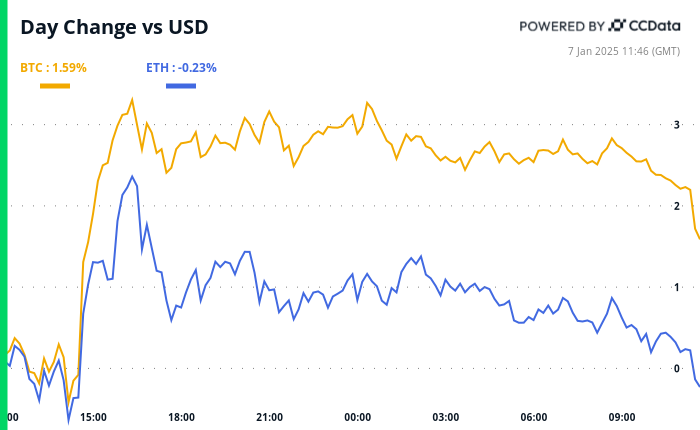Are wallets the new online service providers for Web3?
With the first iteration of the web, there were initially two different modes of access adopted by users. The tinkerers and technologists of the era were happy to experiment with software and dial-up modems to self-direct their online experience — hanging out on Usenet bulletin boards, IRC chat servers, communicating via email and browsing websites themselves.
The technical competency required by this class of users was non-trivial for the average person, and companies who could see the potential of the world wide web created packaged software and portals through which users could connect to parts of the internet.
This was a walled garden within the web, where curated websites and applications provided a simplified online experience for users without them having to get into the weeds of the various applications for navigating different web protocols.
AOL was the early incumbent of this era, with its online portal being many a user’s first experience of the web. Users could send messages instantly to other users via the AOL instant messenger, they could claim an @aol.com address and communicate via email to friends and associates, browse websites and hang out in chat rooms. Almost 3 decades later, AOL is but a distant memory, which survives as a portfolio company of Apollo Global Management, but is very different from where it set out all of those years ago with the first generation of the web.
AOL wasn’t the only company with a strategy to own much of the user’s experience of the web, networks such as Microsoft’s MSN and Comcast with Disney attempted similar feats. Instead, we have Google, Facebook and Apple owning the entry points for users into the online experience.
With Web3 we are close to approaching its very own AOL moment, thankfully without the involvement of Time Warner or Verizon, but with increasingly more companies trying to address the user experiences that sit at the heart of Web3 which need to be overcome to onboard the next generation of users.
Wallet Providers
The area within Web3 where we are seeing much of this focus is from the providers of wallets. After all, it is with wallets that users store digital assets such as cryptocurrencies, stablecoins and NFTs, and are required for interacting with most Web3 applications and services.
Providing services directly from wallets can significantly simplify the Web3 experience for users. Take for example the process of swapping tokens, for instance, if you have Ether in your wallet that you wish to exchange for USDC. The native Web3 approach entails visiting a decentralised exchange such as Uniswap, navigating to the ETH/USDC liquidity pool and kicking off a transaction to exchange one asset for another. Metamask decided to integrate this functionality directly into their wallet, taking a small commission on trades, but in the process providing a seamless experience for its users to swap tokens and cryptocurrencies for one another.
This approach has paid off significantly for Metamask which has brought in over $300m in revenue for the team since its launch. Such approaches are win/win for the user and the wallet provider, hence any company with a wallet technology will be exploring such opportunities. It’s in their interest to provide such a walled garden for its users as they can both help protect users against nefarious actors and also be a source of revenue for themselves.
The downside of such approaches when viewed through a more extreme lens is the AOLisation of wallets, where the winners who capture significant portions of the market have the potential to exert an unhealthy amount of control over the products in their ecosystems. Web3 aside, we’ve already seen this happen in China with WeChat which has become the de-facto portal for many a citizen’s online experiences. WeChat plays well with the Chinese Government ensuring that there is very little…
Read More: blog.web3labs.com









 Bitcoin
Bitcoin  Ethereum
Ethereum  XRP
XRP  Tether
Tether  Solana
Solana  Dogecoin
Dogecoin  USDC
USDC  Cardano
Cardano  Lido Staked Ether
Lido Staked Ether  TRON
TRON  Avalanche
Avalanche  Sui
Sui  Wrapped stETH
Wrapped stETH  Chainlink
Chainlink  Toncoin
Toncoin  Shiba Inu
Shiba Inu  Stellar
Stellar  Wrapped Bitcoin
Wrapped Bitcoin  Hedera
Hedera  Polkadot
Polkadot  WETH
WETH  Bitcoin Cash
Bitcoin Cash  Uniswap
Uniswap  Pepe
Pepe  Hyperliquid
Hyperliquid  LEO Token
LEO Token  Litecoin
Litecoin  Wrapped eETH
Wrapped eETH  NEAR Protocol
NEAR Protocol  Aptos
Aptos  Ethena USDe
Ethena USDe  USDS
USDS  Internet Computer
Internet Computer  Aave
Aave  Render
Render  Mantle
Mantle  Bittensor
Bittensor  Cronos
Cronos  POL (ex-MATIC)
POL (ex-MATIC)  Ethereum Classic
Ethereum Classic  Artificial Superintelligence Alliance
Artificial Superintelligence Alliance  WhiteBIT Coin
WhiteBIT Coin  Virtuals Protocol
Virtuals Protocol  Arbitrum
Arbitrum  MANTRA
MANTRA  Tokenize Xchange
Tokenize Xchange  Monero
Monero